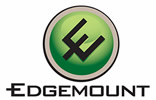

 |
The Fifth International Conference on Emerging Security Information, Systems and Technologies SECURWARE 2011 August 21-27, 2011 - French Riviera, |
|
|||||||||||||||||||
| Details: |
ISBN: 978-1-61208-146-5 |
|
||||||||||||||||
All tracks/topics are open to both research and industry contributions.
Tracks:
ARCH: Security frameworks, architectures and protocols
Formal aspects of security; Security analysis methodologies; Security verification; Security protocols; Security architectures and formalisms; Security and design vulnerability; Security and privacy protection; Performance and security; Secure group communication/multicast; Software design security; Middleware security; Security for nomadic code; Intrusion detection systems; Static analysis for software security; Security modeling
METRICS: Security, trust and privacy measurement
Security, trust and privacy metrics; Security assurance metrics; Security measurement architectures; Metrics for adaptive security systems; Taxonomical and ontological support of security metrics; Experiments and benchmarks for security measurements; Embedding security measurability in software and service architectures; Risk-driven assessment of security; Assessment of effectiveness, efficiency and correctness of security; Mapping security metrics and security assurance metrics; Mapping security measurements and non-functional requirements
SECMAN: Security management
Identity management; Security law enforcement; PKI; PKI Key management; Incident response planning; Intrusion detection and event correlation; Firewalls; Trust management; Software security assurance
SECTECH: Security technologies
Secure protocols; Applied cryptography; Smart cards; Biometrics; Digital rights management; Electronic surveillance; Database security
SYSSEC: System security
Internet security; Security in wireless; Sensor/cellular network security; Ad hoc network security; Security in peer-to-peer networks; Security in wireless multimedia systems; Security in different networks (mesh, personal, local, metropolitan, GSM, Bluetooth, WiMax, IEEE 802.x, etc.); Security of emergency services
INFOSEC: Information security
Information hiding; Anonymity; Authentication; Data Integrity; Security data mining; Data confidentiality and integrity; Information flow protection; Trustworthy networks: authentication, privacy and security models; Secure service discovery; Secure location-based service; Information survivability
RISK: Risk and security
Operational risk (opRisk); OpRisk and field studies; Reputation risk; Risk and security-awareness; Business continuity and disaster recovery; Privacy-awareness; Security and trust
MALWA: Malware and Anti-malware
Threat taxonomies and modeling; Security threats; Threats propagation; Anti-malware technologies; Engineering anti-malware; Anti-virus, anti-spyware, anti-phishing; Malware propagation models; Profiling security information; Vulnerability analysis and countermeasures; Denial of service attacks; Measurements and metrics; Testing samples and techniques; Quarantine/reuse decisions; Anti-malware tool performance; Anti-malware tool suites; Open-source anti-malware; Host-based anti-malware; On-line anti-malware scanning
MISUSE: Electronic abuse protection
Messaging, viruses, spyware; Advanced misuse detection techniques /machine learning, natural language processing, challenge-response, etc./; Message filtering, blocking, authentication; Digital signatures; Generalized spamming /over email, Internet telephony, instant messaging, mobile phone, phishing, etc. /; Spam compression and recognition; Learning misuse patterns; Payment schemes; Economics of generalized spam; Tracking abuse tactics and patterns; Protecting legitimate use patterns; Methods for testing protection robustness; Costs and benefits of messaging use and misuse; Standards for messaging and misuse reporting; Legal aspects /identity theft, privacy, freedom of speech, etc./
ANTIFO: Anti-forensics
Advanced anti-forensics mechanisms; Smart anti-forensics; e-discovery industry and anti-forensics; Overwriting data and metadata; Data hiding approaches; Detecting forensics analysis; Anti-forensics tools; Unix-, Windows-, and Linux anti-forensics techniques; Open source anti-forensics tools; Network anti-forensics tools
PRODAM: Profiling data mining
User and traffic profiling; Data mining and visualization; Profile mining and knowledge discovery; Mining lifecycle for profile collections; Profile warehouse construction; Profile portfolio and profile discovery; Profiling game users and game traffic; Profiling transactions; Simpson'd paradox; Real-time profiling mechanisms; Patterns for information profiling; Profiling engines; Profiling metrics; Forensics; Profiling applications (banks, on-line shopping, etc.); Data mining-based user profile prediction
SECHOME: Smart home security
Fundamentals for SHS; Privacy and protection for SHS; Identify and location management in SHS; Authentication and authorization in SHS; Access control and security policies in SHS; Trust and reputation management; Security context-based interfaces for SHS; SHS for accessibility and elderly/disabled people; Real-time challenges for SHS in eHealth environments; Architectures and systems for SHS; Network technologies and protocols for SHS; Ubiquitous/pervasive platform and middleware for SHS; Services and applications for SHS; SHS on campuses and hotels; SHS for mission critical laboratories; Content protection and digital rights management for SHS; Intelligent devices, sensor network/RFID for SHS; Intrusion detection and computer forensics for SHS; SHS and Homeland security; Personal data privacy and protection in SHS; Emerging standards and technologies for SHS; Commercial and industrial for SHS; Case studies, prototypes and experience
SECDYN: Security and privacy in dynamic environments
Fundamentals on highly dynamic environments; Privacy and predefined access control dilemma; Privacy police, provisions and obligations; Dependability in dynamic environments; Protection of digital documents in dynamic environments; On-line activities in high dynamic systems; Law enforcement in high dynamic systems; Personalization; Privacy and transparency; Distributed usage control; Privacy compliance; Secure ambient intelligence; Secure embedded microprocessor architectures; Secure compilation techniques
ECOSEC: Ecosystem security and trust
Secure and trusted service compositions in peer-to-peer networks; Secure data management in collaborative peer-to-peer networks; Security and reputation models for self-adaptive overlay networks; Identity and trust management in dynamic, self-organizing environments; Social institutional-based trust models for self-evolving communities
CRYPTO: Cryptography
Foundations of cryptography; Applied cryptography; Cryptanalysis; Signatures schemes and trust models; Cryptographic algorithms; Electronic payment systems; High-performance encryption methods; Group-oriented cryptography; Identity-based cryptography; Anonymous authentication; Cryptography for multi-user environments; Cryptography and secure localization systems; Attacks on cryptosystems
CYBER-Threat
e-Crime; Epidemiological models for warware and cyber-crime propagation; Record and retrieval of cyber-crimes; Cyber-crime prevention; Cyber-crime vulnerabilities; Cyber-counterattack at source; Distributed cyber-attacks; Orchestrated cyber-attacks; Recursion attacks; Cyber-storm attacks; Cyber-pranks, hoaxes; Phishing/Pharming and anti-phishing; Cyber-terrorism; Online cyber-crime reporting; Accuracy and security of cyber-reports; Fighting cyber-crimes; Cyber-crime laws






